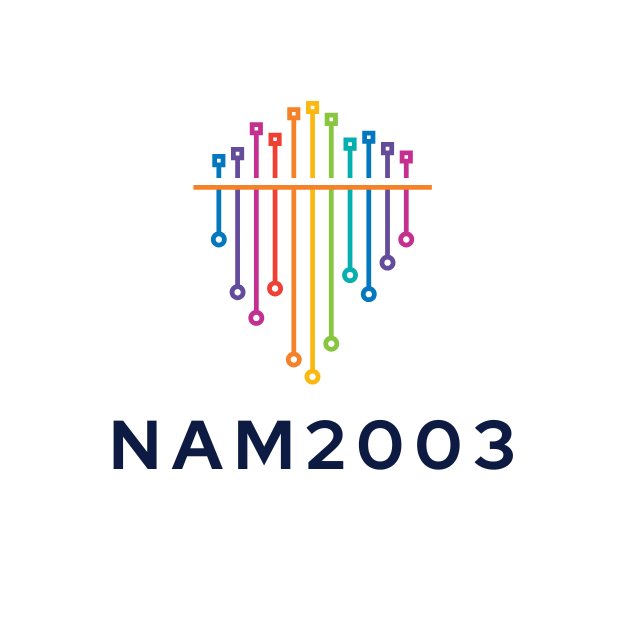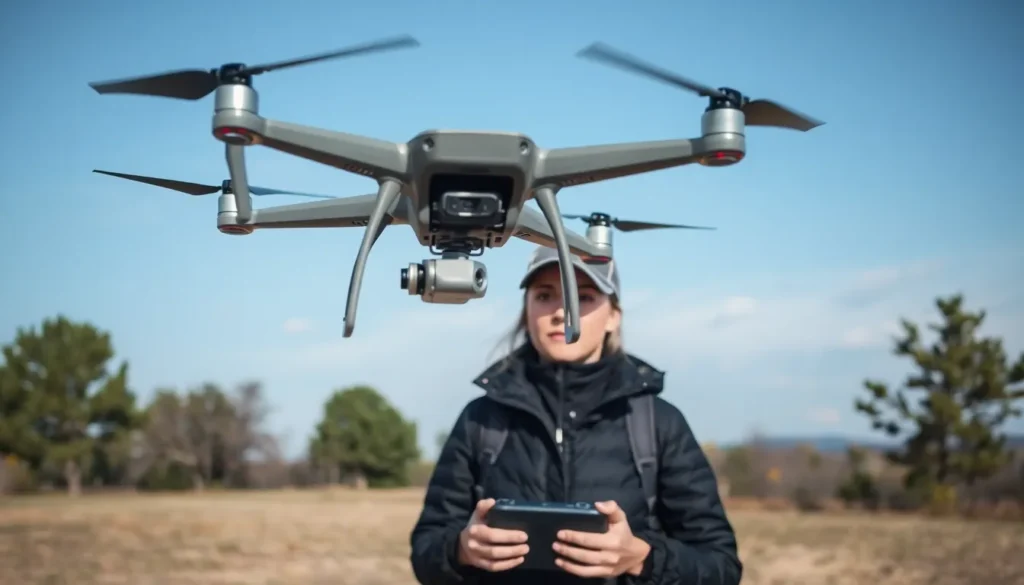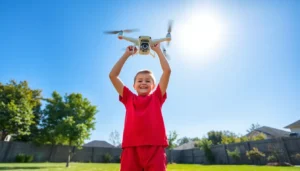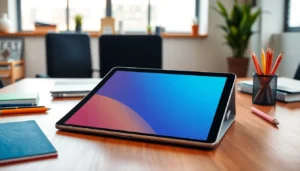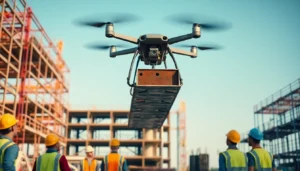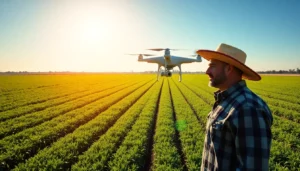Table of Contents
ToggleIn a world where news travels faster than a speeding drone, journalism is taking to the skies like never before. Imagine reporters soaring above the chaos, capturing breathtaking footage and breaking stories that would leave traditional methods in the dust. Drones aren’t just for delivering pizza anymore; they’re revolutionizing how stories are told and shared, giving journalists a bird’s-eye view of the action.
Overview of Drones for Journalism
Drones revolutionize news reporting by providing new opportunities for capturing aerial perspectives. Journalists utilize these unmanned aerial vehicles to cover events like protests, natural disasters, and sporting events from angles previously unattainable. Capturing high-definition visuals, they deliver unique viewpoints that enhance storytelling.
Photographers and videographers benefit from drones by gaining access to remote areas without risking their safety. They’re able to document large crowds, landscapes, and intricate details of a scene that standard cameras cannot manage. Drones also facilitate real-time video streaming, allowing news outlets to broadcast live updates during critical situations.
Regulatory aspects influence drone usage in journalism. In many regions, journalists must comply with specific laws concerning airspace restrictions and privacy concerns. They often obtain permits to operate drones, ensuring they respect people’s rights while still gathering impactful footage.
Technological advancements continuously enhance drone capabilities. Modern drones come equipped with features like obstacle avoidance, GPS, and automated flight paths, which improve user experience. These innovations enable journalists to focus on capturing outstanding images rather than worrying about navigation.
Collaboration is key among various media organizations that embrace drones. Many newsrooms invest in drone technology, with dedicated teams often responsible for operating these devices. As agencies share data and footage, they expand their collective reach, showcasing diverse stories and perspectives.
Drones increasingly play a critical role in investigative journalism. They assist reporters in uncovering environmental issues, human rights violations, and urban development concerns. By accessing areas that are challenging to explore, drones can reveal information that supports accountability and transparency in reporting.
Benefits of Drones in Reporting
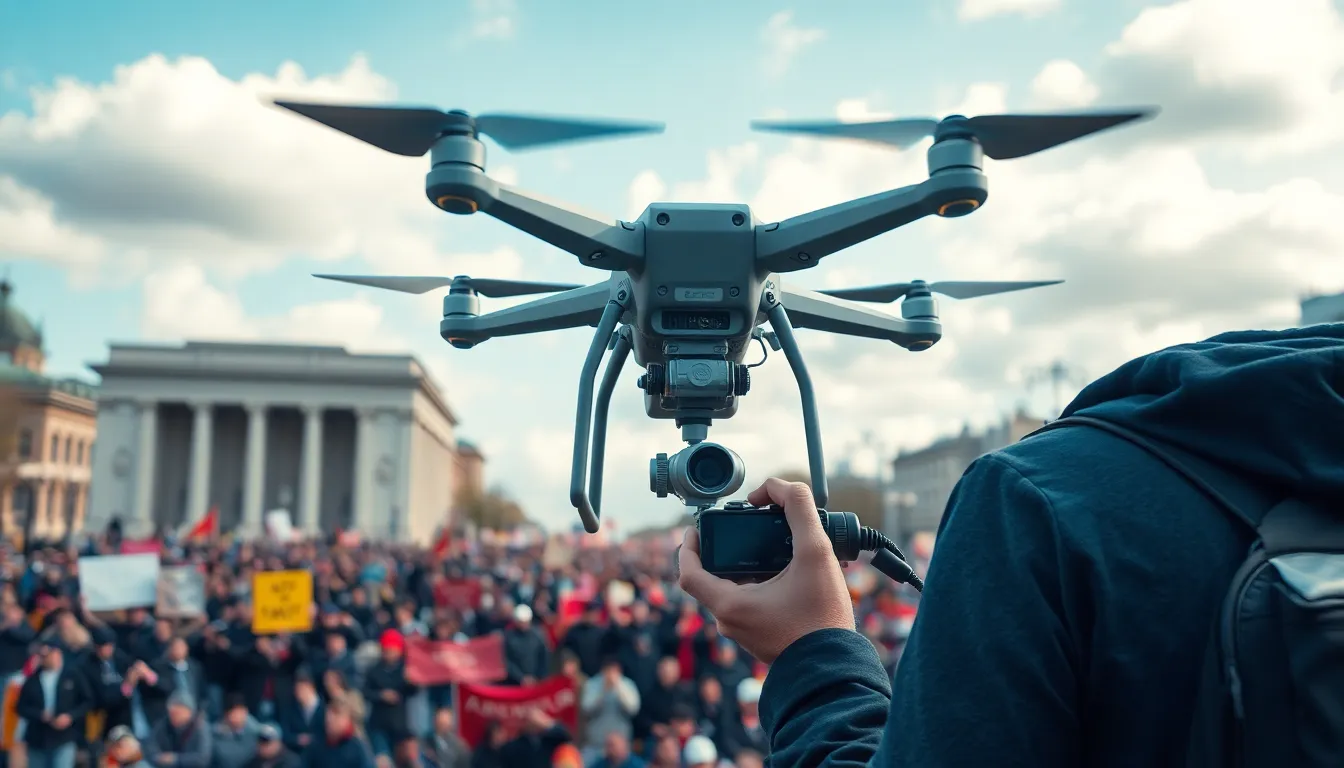
Drones offer significant advantages in journalism, enabling innovative practices and improving the quality of news coverage.
Enhanced Visual Storytelling
Aerial footage transforms visual narratives, captivating audiences with unique perspectives. Journalists use drones to capture sweeping landscapes and high-resolution images that standard cameras can’t achieve. Drone footage enriches storytelling, adding emotional impact to news stories. For instance, live event coverage, such as protests or natural disasters, gains depth with aerial views. The combination of high-definition video and striking angles engages viewers, resulting in a more immersive experience. News outlets effectively leverage these visuals to convey powerful messages, making reports more memorable and impactful.
Increased Access to Remote Areas
Remote areas become accessible with drone technology, making reporting from challenging locations feasible. Journalists reach inaccessible regions, documenting stories that traditional methods might miss. Drones navigate rough terrains and dense forests, allowing coverage of environmental issues or humanitarian crises. With this capability, reporters reveal critical information about urban development or wildlife conservation efforts. Additionally, drones help gather data and visuals without endangering journalists or requiring extensive physical presence. This efficiency enhances overall mission effectiveness and enriches reporting efforts across various sectors.
Challenges Faced by Journalists
Drones offer advantages, but several challenges hinder their use in journalism. Legal and ethical concerns frequently arise, and technical limitations exist, affecting their effectiveness.
Legal and Ethical Considerations
Regulations govern drone usage in most regions. Journalists must navigate airspace restrictions and obtain necessary permits before operating drones. Privacy laws also play a significant role, requiring journalists to avoid infringing on individuals’ rights while capturing images or footage. Compliance with these regulations varies by location, adding complexity for media organizations. Ethical dilemmas often surface as journalists balance the public’s right to know with individual privacy. Transparency in drone operations is crucial, building trust between media professionals and the communities they serve.
Technical Limitations
Technical constraints can impact drone performance. Battery life limits flight duration, restricting the amount of footage captured in a single session. Additionally, adverse weather conditions can hinder drone operation, with strong winds or rain affecting stability. Signal loss can lead to loss of control or video feed, which complicates reporting tasks. Moreover, drones may struggle in densely populated urban areas where tall buildings create obstacles for navigation. Understanding these limitations helps journalists plan more effectively, ensuring successful coverage in diverse environments.
Case Studies of Drones in Action
Drones play a pivotal role in modern journalism, offering unique storytelling opportunities through innovative applications. Various case studies highlight how these aerial tools redefine news reporting.
Notable Examples
Drones have showcased their capabilities in several significant incidents. In 2019, a drone provided critical aerial footage during the Amazon rainforest fires, illustrating the extent of the devastation as journalists reported on environmental impact. During the protests in Hong Kong, drones captured real-time footage of large crowds, displaying the scale of mobilization from an unprecedented perspective. Furthermore, the 2020 wildfires in Australia saw drones delivering high-definition visuals for news outlets, allowing viewers to grasp the intensity of the situation. These examples underline drones’ potential in enhancing narrative depth and offering viewers immersive experiences.
Lessons Learned
Numerous lessons arose from implementing drones in journalism. Compliance with varied regulations is essential; journalists must understand local laws to avoid legal issues and ensure ethical reporting. Notably, enhancing operational skills with drones increases coverage effectiveness; training helps journalists navigate airspace challenges and equipment limitations. Privacy concerns also emerged; striking a balance between the public’s right to know and individual rights remains critical. Moreover, addressing technical limitations, such as battery life, proves vital; journalists learn to plan flights meticulously based on environment conditions, ensuring successful reporting outcomes across different scenarios.
Future of Drones in Journalism
Advancements in drone technology are set to reshape the landscape of journalism even further. Enhanced features like improved battery life, higher resolution cameras, and automation capabilities increase the versatility and effectiveness of drones in news reporting. Such improvements make it easier for journalists to capture high-quality content in various settings without the need for extensive setups.
Emerging applications for drones in journalism will likely expand, enabling reporters to cover complex stories with greater efficiency and creativity. For instance, incorporation of artificial intelligence in drones could streamline the process of identifying newsworthy events, allowing journalists to focus on analysis rather than logistics. Drones may also facilitate deeper connections with audiences through immersive experiences, such as virtual reality tours of significant event locations.
Regulatory frameworks surrounding drone use can evolve alongside these technological advancements. As drone journalism gains traction, regulatory bodies may work to establish clearer guidelines, balancing the need for innovation with safety and privacy concerns. Media organizations must remain vigilant and adaptable, ensuring compliance with new regulations while maximizing the benefits that drones offer.
Collaboration among journalists, drone manufacturers, and policymakers will play a crucial role in shaping the future of this medium. Workshops and training programs focused on drone operation and ethical reporting can help journalists better understand how to utilize these tools effectively. These initiatives foster a culture of responsible drone journalism, emphasizing respect for both public interest and individual privacy.
Innovative storytelling techniques are likely to emerge as more journalists adopt drone technology. Aerial imagery may become a staple in multimedia journalism, enriching the visual narrative. As drones become an integral part of reporting, the public’s expectation for engaging and informative content will likely increase, prompting ongoing adaptation within the industry.
Drones are reshaping the landscape of journalism by offering innovative ways to capture and convey stories. Their ability to provide stunning aerial perspectives elevates news coverage and engages audiences like never before. As the technology continues to advance and regulations evolve, journalists must remain adaptable and informed.
Navigating the challenges of legal and ethical considerations is crucial for responsible reporting. By prioritizing transparency and community trust, media organizations can harness the full potential of drones while respecting individual privacy. The future of journalism is bright with drones at the forefront, promising richer narratives and more dynamic storytelling that meet the demands of an ever-evolving audience.
